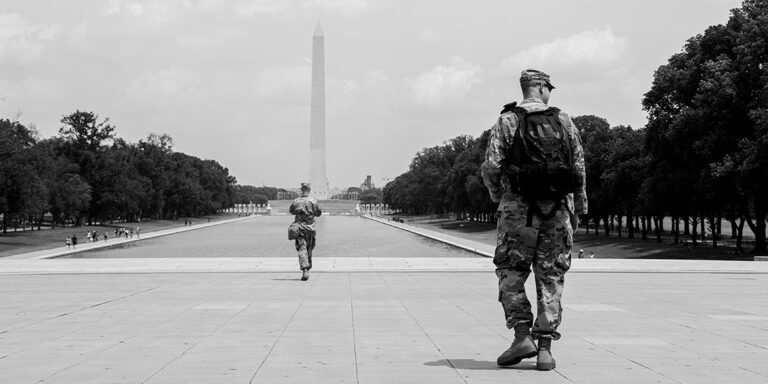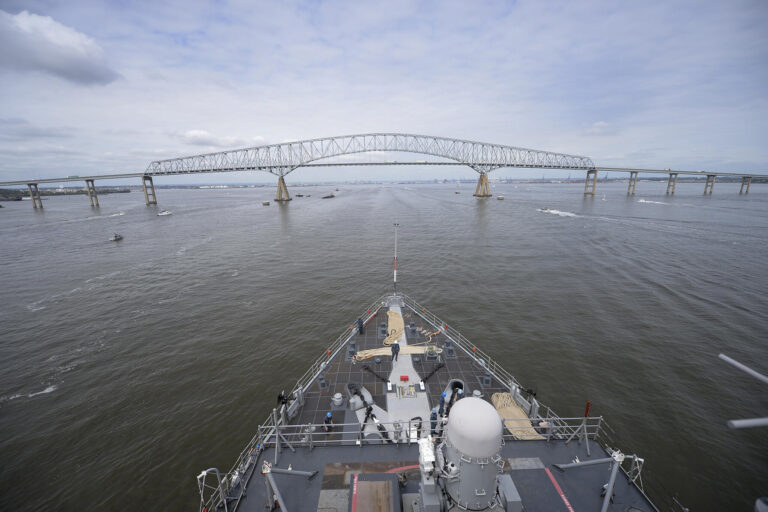
Article Archive by Year

Emergency managers, public health officials, and first responders often stress the importance of physical fitness, but what about mental fitness? Without focused mental agility in even one of the emergency management phases, mistakes or subpar performance are likely. Learn about this author’s new acronym that can help prioritize mental health

The “R” Word
April 10, 2024
Resilience has multiple meanings for public health, emergency, and homeland security management professionals. However, the objective of building resilience should go beyond hazard mitigation. With 2024 being FEMA’s “Year of Resilience,” it is a good time for professionals to start rethinking this concept.

Dungeons and Disasters: Gamification of Public Health Responses
April 10, 2024
New technologies offer new ways to train personnel and exercise public health responses like COVID-19 and prepare response agencies for many other threats and hazards. Gamification integrates realistic scenarios in a controlled environment that can enhance community capabilities and build interagency collaboration and coordination. Learn more about this training and

Interoperability During Mass Casualty Incidents
April 3, 2024
During a mass casualty incident, response agencies must be able to communicate in real-time. This means that interoperability plans need to include everyone involved in the response. One lesson learned from past incidents is that hospitals are an often overlooked “responder.” Learn what one agency is doing to close this

Week 2 – Restoring Infrastructure and Instilling Resilience
April 1, 2024
The Key Bridge collapse was not the first of its kind, and it will not be the last. However, there are measures community leaders can take to strengthen infrastructure and instill resilience. Understanding the short-term and long-term goals after such an incident would help Baltimore and other communities restore the

An Editor’s Personal Journey to Emergency Preparedness
March 27, 2024
In honor of Women’s History Month, the March edition of the Domestic Preparedness Journal features articles by inspirational women who, through their service and writing, are instrumental in building more prepared and resilient communities. The editor also shares her personal journey into emergency preparedness.

Emergency Management Goes to the Hill
March 27, 2024
Emergency managers work behind the scenes to ensure the safety, security, and resilience of communities before, during, and after a disaster. As the requests for assistance increase, funding is not meeting these demands. Leaders from three nationwide organizations went to Washington, D.C., to advocate for emergency management professionals and urge

The Evolution of Homeland Security Higher Education
March 27, 2024
After the terrorist attacks on September 11, 2001, homeland security education expanded to ensure that local, state, tribal, territorial, and federal agencies had the tools they needed to combat these threats. This academic leader shares how homeland security programs change to meet new challenges and evolving threats.

Key Bridge Collapse – Transportation Infrastructure and Global Supply Chain
March 26, 2024
Any incident or event can easily disrupt the supply chain, whether local, regional, or international. Time will demonstrate the transportation, supply chain, and other critical impacts of the Key Bridge collapse in Baltimore. Here are six recommendations to ensure the plans, training, resources, capabilities, and facilities to safeguard the nation’s

Gaining New Skills During Emergency Management Assistance Compact Assignments
March 20, 2024
Emergency management draws people from many backgrounds and career paths. Some enter the field directly from college, some as a second career, and others have circumstances that lead them to this career over time. Read inspiring stories that led three of these professionals to this growing field.
Mental Awareness to Enhance Preparedness
April 17, 2024
Emergency managers, public health officials, and first responders often stress the importance of physical fitness, but what about mental fitness? Without focused mental agility in even one of the emergency management phases, mistakes or subpar performance are likely. Learn about this author’s new acronym that can help prioritize mental health
The “R” Word
April 10, 2024
Resilience has multiple meanings for public health, emergency, and homeland security management professionals. However, the objective of building resilience should go beyond hazard mitigation. With 2024 being FEMA’s “Year of Resilience,” it is a good time for professionals to start rethinking this concept.
Dungeons and Disasters: Gamification of Public Health Responses
April 10, 2024
New technologies offer new ways to train personnel and exercise public health responses like COVID-19 and prepare response agencies for many other threats and hazards. Gamification integrates realistic scenarios in a controlled environment that can enhance community capabilities and build interagency collaboration and coordination. Learn more about this training and
Interoperability During Mass Casualty Incidents
April 3, 2024
During a mass casualty incident, response agencies must be able to communicate in real-time. This means that interoperability plans need to include everyone involved in the response. One lesson learned from past incidents is that hospitals are an often overlooked “responder.” Learn what one agency is doing to close this
Week 2 – Restoring Infrastructure and Instilling Resilience
April 1, 2024
The Key Bridge collapse was not the first of its kind, and it will not be the last. However, there are measures community leaders can take to strengthen infrastructure and instill resilience. Understanding the short-term and long-term goals after such an incident would help Baltimore and other communities restore the
An Editor’s Personal Journey to Emergency Preparedness
March 27, 2024
In honor of Women’s History Month, the March edition of the Domestic Preparedness Journal features articles by inspirational women who, through their service and writing, are instrumental in building more prepared and resilient communities. The editor also shares her personal journey into emergency preparedness.
Emergency Management Goes to the Hill
March 27, 2024
Emergency managers work behind the scenes to ensure the safety, security, and resilience of communities before, during, and after a disaster. As the requests for assistance increase, funding is not meeting these demands. Leaders from three nationwide organizations went to Washington, D.C., to advocate for emergency management professionals and urge
The Evolution of Homeland Security Higher Education
March 27, 2024
After the terrorist attacks on September 11, 2001, homeland security education expanded to ensure that local, state, tribal, territorial, and federal agencies had the tools they needed to combat these threats. This academic leader shares how homeland security programs change to meet new challenges and evolving threats.
Key Bridge Collapse – Transportation Infrastructure and Global Supply Chain
March 26, 2024
Any incident or event can easily disrupt the supply chain, whether local, regional, or international. Time will demonstrate the transportation, supply chain, and other critical impacts of the Key Bridge collapse in Baltimore. Here are six recommendations to ensure the plans, training, resources, capabilities, and facilities to safeguard the nation’s
Gaining New Skills During Emergency Management Assistance Compact Assignments
March 20, 2024
Emergency management draws people from many backgrounds and career paths. Some enter the field directly from college, some as a second career, and others have circumstances that lead them to this career over time. Read inspiring stories that led three of these professionals to this growing field.
Follow Us
Get Instant Access
Subscribe today to Domestic Preparedness and get real-world insights for safer communities.
ARchives
Article Out Loud – Weathering the Unknown: Inside Grant County Emergency Management
January 24, 2024
Full Article By Tara Goode, an Article Out Loud from Domestic Preparedness, January 24, 2024.When threatening weather approaches, communities must make tough decisions. Grant County, Minnesota, is building on its lessons learned to better prepare for future severe storms. Listen on
Article Out Loud – Rising Above the Flood: A Decision Tool for Structural Safety
January 24, 2024
Full Article By Cedric Ling, Debashish Kar, Nur Yazdani, Eyosias Beneberu, Maria Koliou, and Yong Yoo, an Article Out Loud from Domestic Preparedness, January 24, 2024. When homeowners choose to elevate their homes above flood levels, they may compromise the structural integrity of the building if the elevation method does
Article Out Loud – Beyond Patient Care: Family Reunification Planning for Hospitals
January 17, 2024
Full Article By Michael Prasad, An Article Out Loud from Domestic Preparedness, January 17, 2024. To meet a community’s mass care family reunification needs after a disaster, hospitals and other healthcare facilities must have plans and procedures in place for mass casualty incident response, which goes beyond patient care. Here
Article Out Loud – Multimodal Transportation Perspectives
January 17, 2024
Full Article By Nathan DiPillo and Derek Kantar, An Article Out Loud from Domestic Preparedness, January 17, 2024.Without transportation and communications, emergency response can move at an uncomfortably slow pace, enough so that life, property, and the environment may be unnecessarily compromised. The integrated transportation network must be protected from
Article Out Loud – Resilience Versus Emergency Management
January 10, 2024
By Wayne P. Bergeron, An Article Out Loud from Domestic Preparedness, January 10, 2024.Conferences are full of important and interesting sessions, but attendees do not always take away actionable knowledge or have long-term retention of the information. This article summarizes a crowd-sourced conversation with panelists, attendees, resilience experts, and Chat
Article Out Loud – Energy Sector Perspectives
January 10, 2024
By Eric Easton, An Article Out Loud from Domestic Preparedness, January 10, 2024. From the alarm clock that wakes people in the morning, to the natural gas used to cook breakfast, to the refined petroleum products powering vehicles for daily commutes, the Energy Sector plays an integral role in daily
Article Out Loud – The Need for Community Public Safety UAS Programs
November 21, 2023
Despite ongoing efforts to protect communities against attacks involving transportation, buildings, historic sites, sporting events, and so on, this 2018 uncrewed aerial system (UAS) checklist is still applicable today.
Article Out Loud – Five Steps Toward Enhancing Climate Resilience
November 21, 2023
Many communities have been impacted by “acute climate shocks” such as wildfires, hurricanes, floods, heatwaves, and severe winter storms – resulting in the loss of lives, livelihoods, and infrastructure. The five steps shared in this 2018 article can help enhance climate resilience.
Article Out Loud – Ten Winter Issues Every City Should Address
November 15, 2023
After Punxsutawney Phil saw his shadow in February 2014, the National Weather Service issued a winter weather advisory affected at least 26 states. Current plans still need to consider these 10 recommendations.
Article Out Loud – Case Study: Influenza Preparedness in Marin County
November 14, 2023
How prepared are counties to manage the current influenza season? Revisit this 2009 case study to learn how one county in California assessed its public health threats as cases of influenza and H1N1 rose.
Follow Us
Get Instant Access
Subscribe today to Domestic Preparedness and get real-world insights for safer communities.


